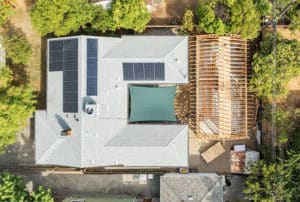





A link to download your FREE brochure will be in your inbox in 3 minutes



















The final price may vary based on project specifics.
To get a free accurate quote tailored to your needs, book a consultation with us today!

The price per square foot provided is an average and may vary depending on project-specific details such as materials, location, complexity, and other factors. Actual costs may differ from the average provided.
It is recommended to obtain a detailed quote based on the specific requirements of your project.

Please note that the monthly payment displayed on this page is an estimate and is subject to variation based on the selected loan product, applicants credit score, loan amount, and other financial details. Actual monthly payment may differ from the estimate provided.
It is recommended to seek advice from a financial advisor or loan officer to obtain precise payment information tailored to individual circumstances.
 Your Trusted
Local Contractor
Your Trusted
Local Contractor
 A backyard tiny house is a smart, versatile solution for homeowners who need extra space without moving. These small structures, also known as Accessory Dwelling Units (ADUs), can serve as a guest house, home office, or even a rental property. Adding a tiny house to your outdoor space can increase your property’s value while providing additional living space. Here’s a guide on what to consider when building a tiny home in your backyard.
A backyard tiny house is a smart, versatile solution for homeowners who need extra space without moving. These small structures, also known as Accessory Dwelling Units (ADUs), can serve as a guest house, home office, or even a rental property. Adding a tiny house to your outdoor space can increase your property’s value while providing additional living space. Here’s a guide on what to consider when building a tiny home in your backyard.
The first step in planning a backyard tiny house is identifying its purpose. Whether it’s for guests, family, or renting out, defining the function will help you determine the dimensions, budget, and design features you need.
One of the biggest advantages of a backyard tiny home is its relatively low cost compared to larger home additions. However, the total cost will depend on various factors, such as size, materials, and labor. For a tiny home with basic amenities like a kitchen, bathroom, and bedroom, the cost will range from $30,000 to $100,000.
Before starting your backyard tiny house project, it’s important to check local permits and zoning laws. Many cities have specific rules governing the construction of Accessory Dwelling Units (ADUs), and not every property is zoned to accommodate additional units.
The design of your tiny home should balance affordability with functionality. Think about how you want to use the space and what features will best serve those needs. Key design considerations include:
If you’re considering a more eco-friendly backyard tiny house, look into solar panels for energy or rainwater collection systems. You can also use reclaimed materials for flooring and fixtures, and install energy-efficient windows and appliances.

A backyard tiny house is not only a great way to add extra space, but it can also boost the value of your home. Whether you’re adding a guest house or a rental unit, the investment can pay off in terms of property value and potential rental income.
Building a backyard tiny house can add significant value to your property, offering a flexible space for guests, family, or rent. By carefully planning your budget, design, and legal requirements, you can create an affordable and functional tiny home that enhances your outdoor space and fits perfectly within your lifestyle.
Yes, you need to check local permits and zoning laws before building. You’ll likely need building permits for the structure, including approvals for the foundation, electrical, and plumbing systems. Zoning laws may also dictate the size, height, and placement of your tiny house.
It depends on local regulations. Some areas allow renting out Accessory Dwelling Units (ADUs), while others have restrictions. You should check your city’s zoning laws and obtain any necessary permits to legally rent out your tiny house.
Costs typically range from $30,000 to $100,000, depending on size, materials, and labor. Expenses include the foundation, construction materials, interior finishes, and utility connections like electrical and plumbing.
Consider features that maximize space and functionality, such as large windows for natural light, loft beds to save floor space, multipurpose furniture, and possibly a porch or deck to extend living space outdoors.
Get a First Look at Real ADU Projects